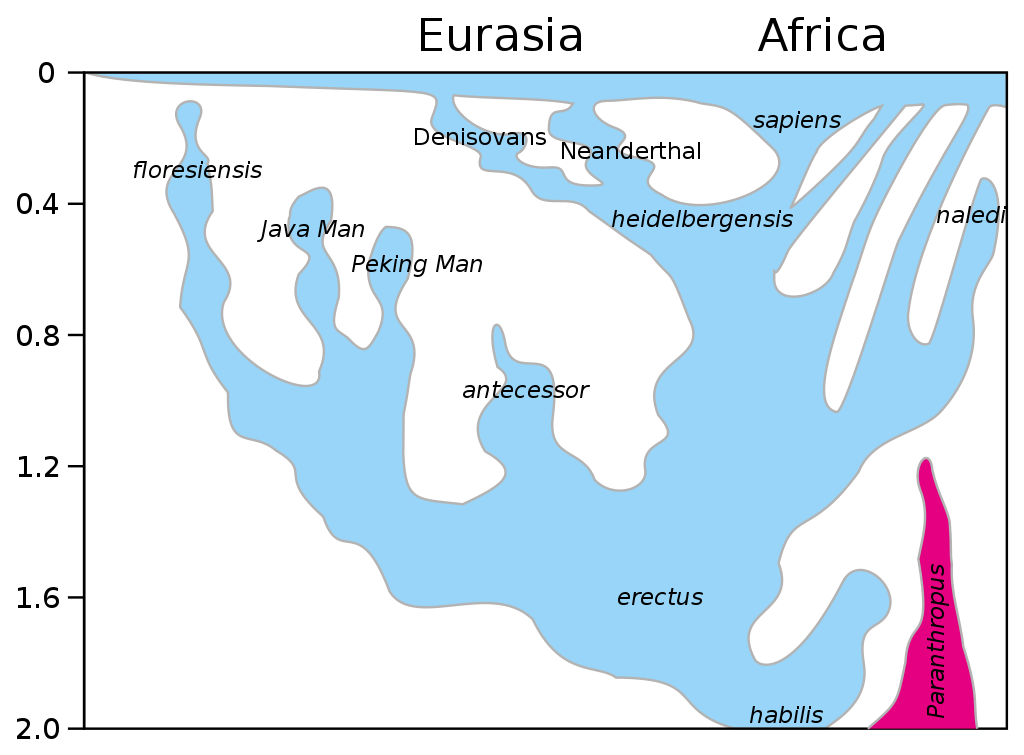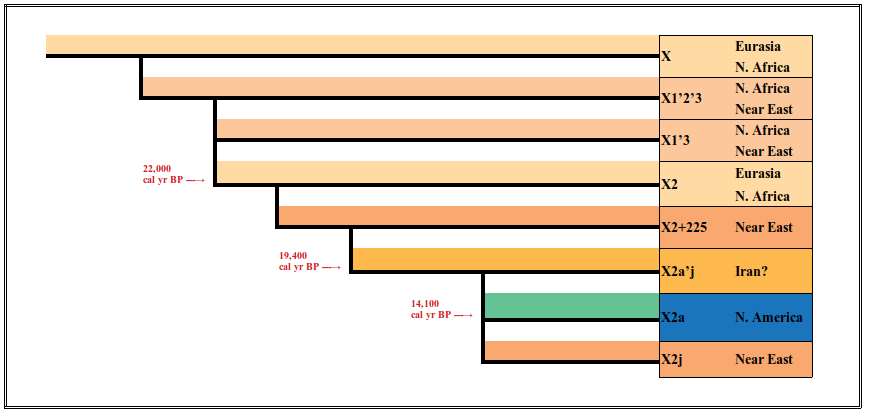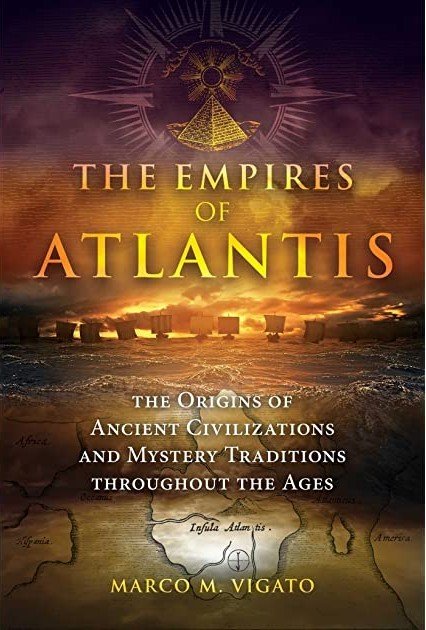
The Empires of Atlantis: The Origins of Ancient Civilizations and Mystery Traditions Throughout the Ages
Marco M. Vigato
Bear & Company
January 2022
416 pages
ISBN: 9781591434337
$25
This was a difficult book to read not because of its technical or philosophical weight, but because it was so thoroughly incorrect. However, because I told the author, who showed up at the Fraudulent Archaeology Facebook group I’d review it (and because I bought the Kindle version from Amazon), I finally trudged through it.
The book is laid out in 15 short chapters within 6 parts, includes footnotes, endnotes, and a bibliography. The author, Marco M. Vigato, states he wanted to use both science and “esoteric tradition” to demonstrate his conclusion, which, essentially, is that “Atlantis, not Africa, was the true cradle of mankind.”
If I attempted to correct, counter, dispute, or otherwise factually contradict everything wrong in this book, I’d have to write another book. Or two. As I started reading Empires, I knew that Jason Colavito was also reviewing it. Knowing him, he’ll focus on a lot of the Thesophical Society stuff and probably point out all the racist undertones that Vigato possibly didn’t realize comes with trying to re-invent that which Ignatius Donnelly essentially already did.
Instead, I’ll focus on a few things I think would be useful for my audience since they’re the sort of topics that get twisted and turned to support pseudoarchaeology by the likes of Graham Hancock, Andrew Collins, and others.
First stop: Ancient Egypt
Vigato says early in the book, “the ancient Egyptians believed that their gods originated from a land to the west, called Amenti.” This is wrong, of course. Amenti is considered the realm of the dead or the Egyptian underworld. It’s also referred to as Duat and represented by a glyph that looks a bit like a sand dollar. Several Egyptian gods and demons live here, like Osiris, Thoth, Horus, Anubis, Ma’at, and Hathor.
It’s also the place where the Sun (Ra) travels daily as it sets in the west only to be reborn in the east by dawn. This is where the gods go, but not from where they came. Ra, for instance, is believed in many of the creation myths to have been the first to emerge as the sun from the benben, a pyramid-shaped mound left behind as the primordial floodwaters began to recede.
Next stop: Abri de Cro-Magnon
In chapter two, Vigato begins by describing what he understands as the sudden arrival of the “Cro-Magnon Man.” Unfortunately, most of the information Vigato is passing on is either flatly wrong or just out of date, and tracing back the non-scholarly sources he cites, it’s no wonder.
As a term, “Cro-Magnon” went out of favor in the 1990s for no other reason than it just wasn’t parsimonious or accurate. In its stead are the terms Early Modern Humans (EMH) or Anatomically Modern Humans (AMH), depending on who you read and the context. In some cases, you might find the term Early European Modern Humans (EEMH). The term Cro-Magnon originally referred to the Cro-Magnon rock shelter (Abri de Cro-Magnon), which is the locality of an Upper Paleolithic site (or Aurignacian) near Les Eyzies in the southwest of France.
Since Vigato is referring to a wider distribution than Europe, what he really means is just Early/Anatomically Modern Humans. He suggests that the distribution might include the Americas, however there simply is no good reason to think this is true nor did the pretended citation he offered demonstrate this. Also, Vigato wants us to think ANH suddenly appeared so as to associate them with his fantasy of Atlantis. They didn’t “suddenly” appear at all. Unless you think between 200,000 and 300,000 years ago is a “sudden” appearance (Callaway 2017).
Vigato would also like his readers to believe that no ancestor to Anatomically Modern Humans is known. While there is still much to learn (thankfully!), much is understood already about our ancestors. See this graphic by Chris Stringer for example.

Side Trip: mtDNA
At best, Vigato completely misunderstands what a haplogroup is and seems to think that just because the letter “x” is included in a haplogroup, it’s “Haplogroup X.” This is the same mistake that Little and Collins made in their book, Denisovan Origins.
Vigato says “the haplogroup can be found in equal measure in both Europe and North America” and goes on to correlate it to the Solutrean practice of Europe which he incorrectly believes is represented in North America. The haplogroup he assumes is “X” in North America is haplogroup X2a. Which is not the haplogroup he assumes is “X” in Europe. Haplogroup X2 is present in Eurasia along with haplogroup X.
Just to be clear: haplogroup X2a is not simply haplogroup X or even X2.
There is a clade of haplogroups under X with subclades that include X1 and X2. In the X2 subclade alone, there are over 20 haplogroups among them X2a. Some of these haplogroups are separated by thousands of years and thousands of more miles. The first appearance of haplogroup X appears to be at around 26,000-30,000 years BP in Europe and Eurasia with X2 showing up in these places at as much as 22,000 years ago. The X2a haplogrup is unique to North America and appears to arrive by at least 14,400 years BP and descend from an ancestor in Eurasia (X2). The age of X2a is also about that of the other New World haplogroups (A, B, C, and D), further eliminating the Soutrean hypothesis as a probable notion.

While it is correct that the “X haplogroup” is found in both Europe and the Americas, associating European haplogroups to American clades is like associating whales with hippos. Both whales and hippos evolved from even-toed ungulates called artiodactyla. Just because you see hippos in the water, doesn’t mean there be whales!
The distribution of mtDNA haplogroups can be confusing and takes some genuine reading of serious literature to grasp, so it’s understandable why the author of a non-scholarly text might not get it. Particularly if that author doesn’t bother to look for data that could potentially contradict a preconceived notion.
Rh-Factor Blood Groups & Piri Reis
Throughout the book, Vigato suggests many pseudoscientific premises that he hopes the reader will accept as fact or at least possible. He discusses, for instance, the supposed significance of Rh-factor blood groups, revealing his ignorance of human evolution and biology (see my previous article on this); he points to the Piri Reis map as supposed evidence of Atlantean knowledge of an ice-free Antarctica was somehow transmitted to Piri Reis to draw in his map (see my previous article on this); and so on.
Eso-what?
But for the most outlandish of his suggestions, premises, claims, and “facts,” Vigato calls upon a special kind of evidence he calls “esoteric tradition.”
By literal definition, “esoteric” means, “intended for or likely to be understood by only a small number of people with a specialized knowledge or interest.” This is a way charismatic leaders, priests, shamans, elders, holy men, con men, magicians, illusionists, and the like have convinced the superstitious and the gullible (which we all are in varied degrees) of their “truths” probably since those very first Anatomically Modern Humans figured out how to efficiently control fire and tell stories around one.
Esoteric sources are those “special books” only certain people are permitted to read from; those special songs or dances only taught to a few; the secret handshake; the secret room of the temple or labyrinth; and those 12 lines of Klingon poetry known only to true Trekkies.
But Vigato wields his “esoteric tradition” in slightly different manner. For him, it’s the sort of “evidence” that an archaeologist, historian, or scientist would not accept. At least not without the corroboration of testable, potentially falsifiable data. The kind of data that can be measured, repeated, and verified.
To Vigato, no human story, myth, idea, or whim seems any more or less valid than the hard data of a chemistry experiment. Especially Plato’s analogy of society through the tale of Atlantis as used in two of his philosophical dialogues, the Timaeus and the Critias.
Last Stop: Atlantis, Everyone Off
Plato, of course, meant these dialogues as teaching tools and ways of exploring things like what it meant to be a powerful State. It was probably not a good idea to criticize contemporary Athens directly (the same state that sentenced his mentor, Socrates, to death), so he used a character (Critias) in two parts of what was to be a three-part story (Timaeus, Critias, and the unwritten Hermocrates) to re-tell a fictional story by yet another character (Solon), in order to make a political analogy. Ironically, Solon’s own source was that of Egyptian priest who is supposed to know of prehistoric Athens through hieroglyphic records (Clay 1997, 2010; Vidal-Naquet 1986).
Most scholars see the tale of Atlantis as one that uses Athens and Atlantis as placeholders for Sparta and Athens—the powerful Atlantis being the analog for Athens (Vidal-Naquet, 1986). Scholars also see that this is re-enactment of the “Sicilian expedition” in which Athens invaded Sicily in 415 BCE in an attempt to conquer Syracuse and Carthage—a military campaign that ends in disaster for Athens (Clay 1997, 2010; Howland 2007).
Overall, the Atlantis story is probably meant to be a cautionary tale. Or perhaps a critique of Athens’ history. Because the third dialog in this assumed “late trilogy” was never written (Plato didn’t even finish Critias), we may never truly understand what the purpose of the story really is.
Atlantis Disproves Itself
Never mind what scholars and philosophers think (even though they’re the people that actually dedicate their lives to studying this sort of thing). Science tells us Atlantis was a story and isn’t true. Most proponents of the Atlantis myth as real history seem to consistently overlook the one glaring fact that stares them right in the kisser: Athens.
You can’t pretend Atlantis was a real city-state without also acknowledging the same for Athens. And 9000 years before Plato (9360 BCE), the archaeological record simply doesn’t support the tale. This was even before the pre-pottery Neolithic of Greece (6800-6500 BCE) and the Mediterranean, and the cultures that inhabited the land where Athens stood were very different. There were no cities. No cities means no Athens. No Athens means no Atlantis.

Vigato wants his readers to believe that Plato is “by no means the only classical source on Atlantis,” but it really is. There are no other sources for Atlantis beyond the beginning of Plato’s Timaeus and most of the fragmentary Critias dialogues. It is probable that the planned Hermocrates may have made mention of this fable, but, alas, Plato never wrote it.
For some unknown reason, Vigato cites Herodotus Histories 1.202 as an example of another classical source for Atlantis. Yet this points to a description of the river Araxes in the Persian Empire, leaving one to wonder the veracity of other “citations” in his book. Do they likewise point to random sources, padding his text with a pseudo-scholarly look and feel. Indeed, the majority of his “sources” are among the more questionable works of pseudoscientific and non-factual provenance.
Update (3/3/2022): The author let me know that what he really meant to cite above was Histories 1.203, which reads: “This is a sea by itself, not joined to the other sea. For that on which the Greeks sail, and the sea beyond the pillars of Heracles, which they call Atlantic, and the Red Sea, are all one: but the Caspian is separate and by itself.” He even gave me this link, which I think we can forgive him for the incorrect citation since he was using the website instead of the printed version that I have of Godley’s translation. The site did a poor job of paginating the book. What he would like everyone to know, however, is that instead of “Atlantic,” the original Greek text (????????) would translate to “Atlantis.”
Here, Herodotus is attempting to differentiate the Caspian from the other seas known to Greek sailors: the Red Sea, the Mediterranean, and …. wait for it… the Atlantic. Which he calls the “????????” which simply means “of Atlas.” This is the same origin for the word, “??????????” (Atlantic). As much as he enjoyed sharing what he knew (and thought he knew), is there any doubt that Herodotus would have had much to say about a city-state such as the one in Plato’s invented fiction? If he thought it existed?
There is much left to criticize in this book which Vigato flat out gets wrong. Like his ignorance of geologic turbidity, which he mistakes for “extinct river beds” under the ocean. Or that the mid-Atlantic Ridge constitutes a “now-submerged continental land mass” he believes “sank in stages over several thousands of years” contrary to the geologic record. Of course, Vigato offers no physical, testable evidence.
This, however, is the benefit of claiming an “esoteric tradition.” You get to ignore little things like evidence and reason and only acknowledge those data that confirm the conclusion you arrived with. Science and reality be damned.
Vigato began his book with a conclusion. He tried to support that conclusion with pseudoscientific and fictional accounts he apparently gathered for 15 years.
References and Further Reading
Callaway, Ewan (7 June 2017). “Oldest Homo sapiens fossil claim rewrites our species’ history”. Nature. doi:10.1038/nature.2017.22114
DNA, mtDNA, aDNA, and haplogroups
Brown, Michael D., Seyed H. Hosseini, Antonio Torroni, Hans-Jürgen Bandelt, Jon C. Allen, Theodore G. Schurr, Rosaria Scozzari, Fulvio Cruciani, and Douglas C. Wallace (1998). mtDNA Haplogroup X: An Ancient Link between Europe/Western Asia and North America? The American Journal of Human Genetics, 63(6), 1852–1861
Fagundes, et al (March 2008). “Mitochondrial Population Genomics Supports a Single Pre-Clovis Origin with a Coastal Route for the Peopling of the Americas”. The American Journal of Human Genetics. 82 (3): 583–592. doi:10.1016/j.ajhg.2007.11.013
Raff, Jennifer A. (2022). Origin: A Genetic History of the Americas. Twelve: New York
Raff, Jennifer A. and Deborah A. Bolnick (2015). Does Mitochondrial Haplogroup X Indicate Ancient Trans-Atlantic Migration to the Americas? A Critical Re-Evaluation. PaleoAmerica, 1(4), 297-304
Reidla, et al (2003). Origin and diffusion of mtDNA haplogroup X. American journal of human genetics, 73(5), 1178–1190. https://doi.org/10.1086/379380 https://www.ncbi.nlm.nih.gov/pmc/articles/PMC1180497/
Atlantis as the Myth it is
Diskin Clay (1997). “The Plan of Plato’s Critias” In T. Calvo & L. Brisson (eds.). Proceedings of the IV Symposium Platonicum. Selected papers. pp. 49–54
Clay, Diskin (2010). Platonic Questions: Dialogues with the Silent Philosopher. Pennsylvania State University Press.
Howland, Jacob (2007). Partisanship and the Work of Philosophy in Plato’s Timaeus. The Review of Politics, 69, 1-27
Vidal-Naquet, Pierre (1986) “Athens and Atlantis: Structure and Meaning of a Platonic Myth.” In P. Vidal-Naquet & A. Szegedy-Maszak (ed.), The Black Hunter: Forms of Thought and Forms of Society in the Greek World, 263-284. Baltimore, MD: Johns Hopkins University Press.

Leave a Reply
You must be logged in to post a comment.